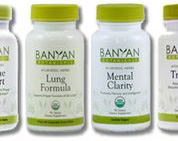 |
||||||||||||||||||||||||||||||||||||||||
|
|
|||||||||||||||||||||||||||||||||||||||
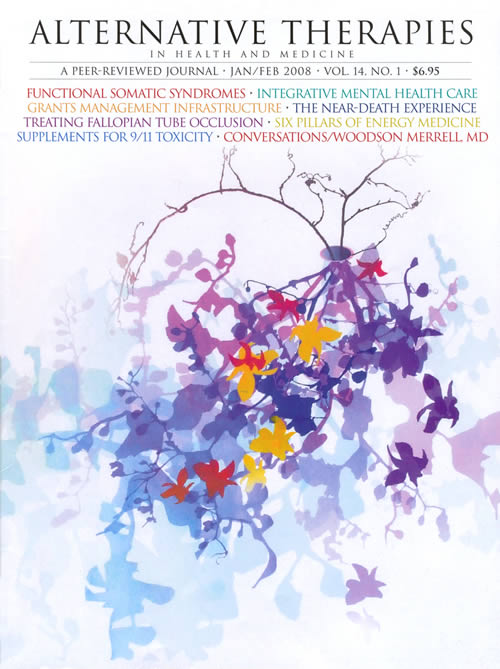
This article appears courtesy of
Alternative Therapies in Health and Medicine.
AYURVEDIC HERBAL SUPPLEMENTS AS AN
ANTIDOTE TO 9/11 TOXICITY
ANTIDOTE TO 9/11 TOXICITY
James J. Dahl, PhD; Katherine Falk, MD
An in-treatment web-based survey was conducted in 2005 with 50 New York World Trade Center rescue and recovery
workers, volunteers, and area residents and workers who were treated with Ayurvedic herbs for post-9/11 symptoms. The survey documented
pretreatment efforts at symptom relief, post-treatment symptom impact, and the context for using the herbal intervention. Herbal treatment
was administered and monitored by a private non-profit organization. The natural detoxification and immune-strengthening program consists of
4 herbal supplements developed by an Ayurvedic physician. A minimum 6-month basic program was recommended, but many participants continued
to 1 year and longer. All 50 respondents reported high incidence of alleviation of previously intractable symptoms, chiefly respiratory
symptoms, fatigue, and depression. (Altern Ther Health Med. 2008;14(1):24-28.) |
James J. Dahl, PhD, is a senior research associate at the Phoenix House Foundation, New York, New York.
Katherine Falk, MD, is an assistant clinical professor of psychiatry at the Mt Sinai School of Medicine, New York.
The attack on the World Trade Center (WTC) on September 11, 2001, released toxic chemicals
into the air. The following were found in repeated air-sample testing in lower Manhattan: asbestos, glass fibers, cement dust, lead,
polychlorinated biphenyls, hydrochloric acid, polychlorinated dioxins and furans, organochlorine pesticides, as well as volatile organic
compounds, polycyclic aromatic hydrocarbons, and metals. The toxic air from the burning and collapse of the WTC has created a public health
problem in New York City.
The September 2006 report of the World Trade Center Worker and Volunteer Medical Screening
Program at Mt Sinai School of Medicine was the result of a 5-year assessment of the health of 9442 male and female recovery workers at the
WTC site.1 The study found that a high proportion of those examined became sick
as a result of this work and that illnesses have persisted in the years since September 11 in a high proportion of these workers.
Other groups were affected as well. About 100 000 people worked in the area in offices,
restaurants, and shops, and about 25 000 lived there.2 On September 17, the New
York Stock Exchange and many businesses reopened.3 Many residents cleaned their
own homes, exposing themselves to WTC dust.4,5 They too “developed serious,
persistent health problems as a result of the attacks.”2(p27) A special
group at increased risk for asbestos-related illness (20 or more years from now) are the workers engaged in clean-up operations in offices
and residential buildings near the site.6 Small-business owners returned only
days after the attacks and cleaned up their shops and restaurants.3 A survey of
more than 2000 individuals who lived within a 1-mile radius of the WTC conducted 8 months after the attacks found that previously healthy
individuals had an increased rate of respiratory symptoms and medical care compared to a control
population.7
This article reports the results of a study of an Ayurvedic herbal treatment developed
specifically for the health problems caused by exposure to the toxic chemicals at Ground Zero and in lower Manhattan in the months following
the September 11 attack on the World Trade Center. Ayurveda is an ancient system of traditional Indian medicine. It is considered the oldest
continuously practiced healthcare system in the world and was originally written in the Vedic texts more than 5000 years ago. The aim in
Ayurveda is to integrate and balance the body, mind, and spirit, which is believed to help prevent illness and promote wellness. Ayurveda
also has treatments for specific health problems.
The basis of Ayurvedic medicine is 5 primary elements: ether (space), air, fire, water, and
earth. These elements congregate in certain patterns in living beings; these patterns are known in Sanskrit as doshas, which means
organization. “As long as the doshas are normal in quantity and quality, they maintain a harmonius psychophysiology.” When
they go out of balance, they corrupt the body.8(p14)
The 3 doshas are Vata, Pitta, and Kapha. Air and space form Vata, which is the moving
force—for example, breath. Fire and water form Pitta, which is concerned with assimilation. Water and earth form Kapha, which is the
force of stability. The goal of Ayurvedic medicine is to establish and maintain balance of the life energies within the individual by
bringing the 3 doshas into equilibrium.9 The Ayurvedic herbal formulas
studied here were intentionally formulated to be tridosha, or dosha-neutral, meaning that they are effective regardless of the
individual’s Ayurvedic diagnosis and are meant to address a certain set of symptoms (ie, heavy metal toxicity).
The Ayurvedic herbal formulas for this survey study population were developed by Drs Pankaj
Naram and Smita Naram, Ayurvedic practitioners in India who have more than 20 years of experience in successfully treating severe chemical
toxicity in factory workers in Bombay. The herbs were distributed by Serving Those Who Serve, Inc (STWS), a small not-for-profit
organization created to address some of the needs of those who became ill after September 11. The organization offers the Ayurvedic herbal
supplements to a targeted and self-selected population: rescue and recovery workers, volunteers, and local workers and residents. A minimum
6-month basic program is recommended, with many participants extending this period considerably. Expected results include improvement in
respiratory function, memory, concentration, depressive symptoms, and ability to sleep; increased stamina; and overall sense of well-being.
Each person in this study was given 4 different formulas of Ayurvedic herbs twice a day. One
formula acted on the lungs and respiratory system as an expectorant and bronchodilator and had an anti-inflammatory and antihistaminic
effect; the second was for the brain and nervous system and improved the functioning of the central nervous system, reducing anxiety and
depression; the third was for the immune system to improve the function of white blood cells; and the fourth was for general detoxification
by eliminating heavy metals throughout the body. Each batch of herbal mixtures was tested by Neotron Analytical and Technical Services in
Modena, Italy, and met the ISO standards for heavy metals.
There are many human studies looking at the efficacy of Ayurvedic herbs for a variety of
illnesses, including osteoporosis,10 type 2
diabetes,11 liver disease and
hepatitis,12,13 and
cardiovascular disease,14 but these studies do not address heavy metal toxicity,
the condition of this study’s target population. An extensive search of the literature found few studies that evaluated Ayurvedic herbs
as a treatment for heavy metal toxicity—and those studies consisted only of animal research. For example, the Ayurvedic herb Bacopa
monniera was found to protect the brain from oxidative damage resulting from aluminum
toxicity.15 A study examining the effect of cystone,
a polyherbal Ayurvedic preparation, on the nephrotoxicity and
antitumor activity of cisplatin found that cystone protected tumor-bearing mice from cisplatin-induced nephrotoxicity without inhibiting
cisplatin’s anti-tumor effects.16 Clearly, there are important human and
animal research precedents for examining the effectiveness of Ayurvedic herbal treatments for chemical toxicity.
OBJECTIVE
The objective of this study was to document pretreatment efforts at symptom relief and
post-treatment symptom impact of this nontraditional intervention and the context for using the herbal intervention.
METHODS
A total of 80 individuals currently or formerly participating in the STWS Ayurvedic herbal
program were contacted by mail or e-mail and asked to complete a novel 33-question survey that was mailed to them and that was also made
available on the Internet for completion. This was a comprehensive sample of all current and reachable former participants. Of those
contacted, 50 of 80 people (72%) completed the survey.
RESULTS
The mean level of exposure (direct exposure) was 3-6 months, with more than 18% of
participants listing exposure of 2 years or more (Figure 1). Fifty-three percent were men, 47% were women, and more than 76% were between 40
and 60 years of age.
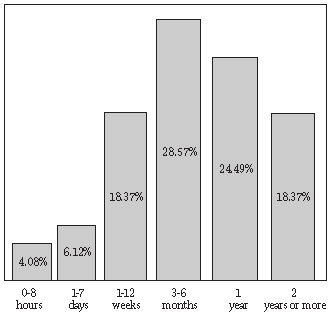 FIGURE 1 Exposure Duration |
Fifty-six percent were volunteers and rescue workers (fire, police, emergency medical
services). Sixty-six percent were in the immediate area of Ground Zero, and 22% were in the area from Ground Zero to Canal Street.
Respondents reported a wide range of symptoms, with fatigue, exhaustion, and “not feeling well” among the symptoms reported as
“extremely serious” on a Likert-type scale of 0-5, with 0 and 1 being minimal and 5, extremely serious (Table). Memory problems,
cough, breathing difficulties, concentration problems, and depression were also high among the “extremely serious” symptoms
reported. Other symptoms attributed to 9/11 were fear of being (remaining) in New York City, panic attacks, allergies/sinus problems,
anxiety, back pain, throat pain, easy rage, and audio hallucinations of sirens.
Nearly 65% of STWS patients received conventional medical treatment for their symptoms, and
nearly 44% of that treatment was conventional medication, with 26% receiving psychotherapy or counseling and 13% receiving psychiatric
medication.
|
TABLE Patient-reported Ratings of Helpfulness of Conventional Medical
Treatment
vs Helpfulness of Herbal Treatment of Symptoms of 9/11 Toxicity*
|
|||||||||||||||||||||||||||||||||||||||||||||||||||||||||||||||||||||||||||||||||||||
Medications taken for this broad range of symptoms were assessed on a symptom-specific basis.
The most frequent medications taken were salmetrol xinaloate, salbutamol, ipratropium bromide and albuterol sulfate, and montelukast for
difficulty breathing or asthma (32%); fluticasone propionate, triamcinolone acetonide, mometasone furoate monohydrate, and cefdinir for
allergies or sinus problems (29%); citalopram, venlafaxine, clonazepam, and fluoxetine for anxiety or depression (15%); and lansoprazole for
acid reflux (12%). Medications that were continued during and after the STWS treatment included asthma medication (33%), allergy medication
(19%), anti-anxiety or antidepressant medication (17%), and medication for acid reflux (14%).
Respondents reported a mean level of helpfulness of medical and other conventional treatment
in symptom relief of 2.57 for 14 specific symptoms plus a category of “other” on a Likert-type 6-point scale of 0-5, from not
helpful to extremely helpful, respectively, indicating a low rating of helpfulness (Figure 2). Those with headaches; fatigue; exhaustion;
depression; memory, concentration, and sleep problems; edema; and not feeling well reported the least help with their symptoms from these
conventional medical treatments.
In Figure 3, respondent reports of the helpfulness of herbal treatment for these same
symptoms show a higher level of treatment satisfaction, especially with not feeling well, difficulty breathing, exhaustion, fatigue, and
difficulty sleeping.
Many patients had tried other holistic or non-conventional medical treatments before they
sought out the STWS program. These included acupuncture (20%), chiropractic (16%), energy/spiritual healing (12%), and a combination of
other methods (12%).
More than 28% said they sought Ayurvedic herbal treatment because they were frightened about
the possible health impact of toxic materials. In addition, 25% reported that they were referred to STWS by someone else, and 23% said they
participated because their health had not improved substantially with other treatments.
AYURVEDIC TREATMENT THROUGH SERVING THOSE WHO SERVE
Forty percent of respondents reported taking the STWS treatment for 12 months or more.
Twenty-eight percent took it for 90 days to 5 months, and 22% took it for 6-11 months.
Difficulty breathing was the second leading symptom reported for which respondents found the
STWS treatment extremely helpful (ranked 4.19 on a 6-point scale from 0-5 and “not feeling well” was the first, ranked 4.3).
Cough, wheezing, concentration problems, difficulty sleeping, and other associated problems were each reported as relieved at a very helpful
level (ranked 3.57-4.03). The level of helpfulness of conventional medical treatments was rated significantly lower for each symptom than
the level of helpfulness of the herbal treatment.
More than 25% of patients experienced no problems taking the herbs, whereas more than 15%
reported problems such as nausea and gas in the early stages, and more than 15% reported that the herbs “tasted bad.” More than
85% reported experiencing no long-term negative effects from the STWS treatment.
In total, 98% said they would recommend the herbal program to a friend with similar
symptoms.
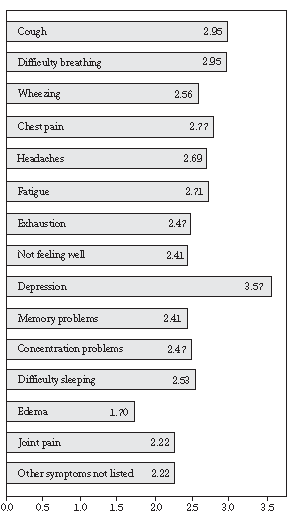 FIGURE 2 Helpfulness of Conventional Medical Treatment for Symptoms |
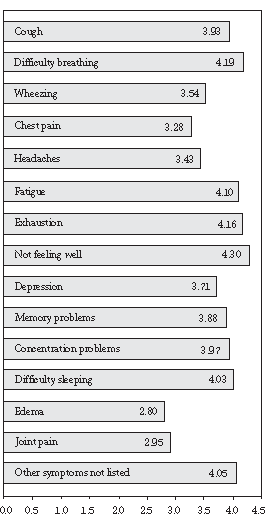 FIGURE 3 Helpfulness of Ayurvedic Herbal Treatment for Symptoms |
DISCUSSION
The mean reported level of helpfulness with preexisting symptoms from the herbal treatment
was 3.8 on a Likert-style index of 1 (not helpful) to 6 (most helpful). This contrasts with the reported helpfulness of 2.6 for conventional
medical treatments that patients had tried. The helpfulness of herbal treatment was rated much higher for breathing difficulties, fatigue,
exhaustion, and difficulty sleeping, all of which were rated above the mean in helpfulness at 4.0 or higher. Herbal treatment of the most
serious symptoms resulted in the highest (at or above the mean of 3.8) ratings of symptom relief. Herbal treatment therefore was helpful for
those symptoms rated highest in seriousness by those surveyed.
Limitations on the generalizability of results from this study and survey are due to the lack
of a control group of similar location, exposure, and symptoms post-9/11 with whom to compare those who received Ayurvedic herbal treatment.
We also were limited by the participants’ self-reporting of medical symptoms and their persistence or improvement, as opposed to
objective medical testing of levels of impact for the cited symptoms. In addition, there are many confounding factors related to estimation
of treatment impact, including use of conventional medical treatments prior to the herbal treatment and continuing use of these same or
other medical treatments during and after Ayurvedic herbal treatment. The unique survey questionnaire has not been subjected to tests of
validity and reliability and thus itself presents a challenge to generalizability from this single study. Alternative explanations for the
reported impact of Ayurvedic herbal treatment include a “placebo effect” compounded by stress relief in the wake of profound
stressful events and conventional medical treatment success when co-treatments occurred in the observed population. A more general problem
of methodological quality in clinical trials of treatment with herbal preparations also pervades this study, as standardization of herbal
medicines (dosage and potency) is a perennial problem, and prospective, randomized, placebo-controlled clinical trials to support efficacy
are lacking.
CONCLUSION
Significant improvements during Ayurvedic herbal treatment were reported by this high-risk,
toxin-exposed population for specific symptoms that had been reported as not improving under conventional medical treatment, including
cough, difficulty breathing, fatigue, exhaustion, not feeling well, difficulty sleeping, and other symptoms. None of the participants
reported adverse reactions or significant problems beyond the 15% of respondents who reported initial gastric distress while adapting to the
herbal treatment regimen. Those with serious unresolved medical symptoms such as cough, difficulty breathing, depression, fatigue, and
exhaustion described finding relief through the Ayurvedic herbal treatment.
Acknowledgments
The authors owe special thanks to Stephanie Golden, freelance author and journalist, for editing assistance, and to Jose Mestre,
executive director, Serving Those Who Serve, for his dedication to this project and assistance to the study.
If you want to make a tax-deductible donation to support STWS:
REFERENCES
1. Herbert R, Moline J, Skloot G, et al. The World Trade
Center disaster and the health of workers: five-year assessment of a unique medical screening program. Environ Health Perspect.
2006;114(12):1853-1858. Available at: http://www.ehponline.org/docs/2006/9592/abstract.html. Accessed October 2, 2007.
2. Assessing September 11th Health Effects: What Should Be
Done? House Committee on Government Reform, Subcommittee on National Security, Emerging Threats, and International Relations, 108th Cong
(2003) (testimony of Robin Herbert, MD, Medical Co-Director of the Mount Sinai Center for Occupational and Environmental Medicine).
3. Gittrich G, Siemaszko C. Lower Manhattan goes back on the
job today: stock exchange, many businesses will reopen. New York Daily News. September 17, 2001. Available at:
http://www.nydailynews.com/archives/news/2001/09/17/2001-09-17_lower_manhattan_goes_back_on.html?print=1. Accessed October 2, 2007.
4. Testimony of Craig Hall, President, World Trade Center
Residents Coalition, to the WTC Expert Technical Review Panel; May 24, 2004; New York, NY. Available at:
http://www.911ea.org/May24,2004.Testimony.Hall.pdf. Accessed November 14, 2007.
5. Farley M. A year after; a toxic legacy lingers as cleanup
efforts fall short; health: high levels of pollutants remain in buildings near the trade center site. Los Angeles Times. September 4,
2002; A1.
6. Testimony of Stephen M. Levin, MD, Before the (US Senate)
Committee on Environment and Public Works Subcommittee on Clean Air, Wetlands, and Climate Change. February 11, 2002. Available at:
http://epw.senate.gov/107th/Levin_021102.htm. Accessed November 14, 2007.
7. Chen LC. Community exposures to particulate matter air
pollution from the WTC Disaster. Paper presented at: WTC Expert Technical Review Panel; May 24, 2004; New York, NY. Available at:
www.epa.gov/wtc/panel/pdfs/chen-20040524.pdf. Accessed October 2, 2007.
8. Lad V. Textbook of Ayurveda. Albuquerque, New
Mexico: Ayurvedic Press; 2001.
9. Bhushan P, Kalpana J, Arvind C. Classification of human
population based on HLA gene polymorphism and the concept Prakriti in Ayurveda. J Altern Complement Med. 2005;11(2):349-353.
10. Singh BB, Mishra LC, Vinjamury SP, Aquilina N, Singh VJ, Shepard N.
The effectiveness of Commiphora mukul for osteoarthritis of the knee: an outcomes study. Altern Ther Health Med.
2003;9(3):74-79.
11. Saxena A, Vikram NK. Role of selected Indian plants in management of
type 2 diabetes: a review. J Altern Complement Med. 2004;10(2):369-378.
12. Dhiman RK, Chawla YK. Herbal medicines for liver diseases. Dig Dis
Sci. 2005;50(10):1807-1812.
13. Okamoto T, Hino O. Drug development with hints from traditional Indian
Ayurveda medicine: hepatitis and rheumatoid as an example. Int J Mol Med. 2000;6(6):613-615.
14. Mamtani R, Mamtani R. Ayurveda and yoga in cardiovascular diseases.
Cardiol Rev. 2005;13(3):155-162.
15. Jyoti A, Sethi P, Sharma Bacopa monniera prevents from aluminium
neurotoxicity in the cerebral cortex of rat brain. J Ethnopharmacol. 2007;20;111(1):56-62. Epub 2006 Nov 11.
16. Rao M, Praveen Rao PN, Kamath R, Rao MN. Reduction of
cisplatin-induced nephrotoxicity by cystone, a polyherbal ayurvedic preparation, in C57BL/6J mice bearing B16F1 melanoma without reducing
its antitumor activity. J Ethnopharmacol. 1999;68(1-3):77-81.
